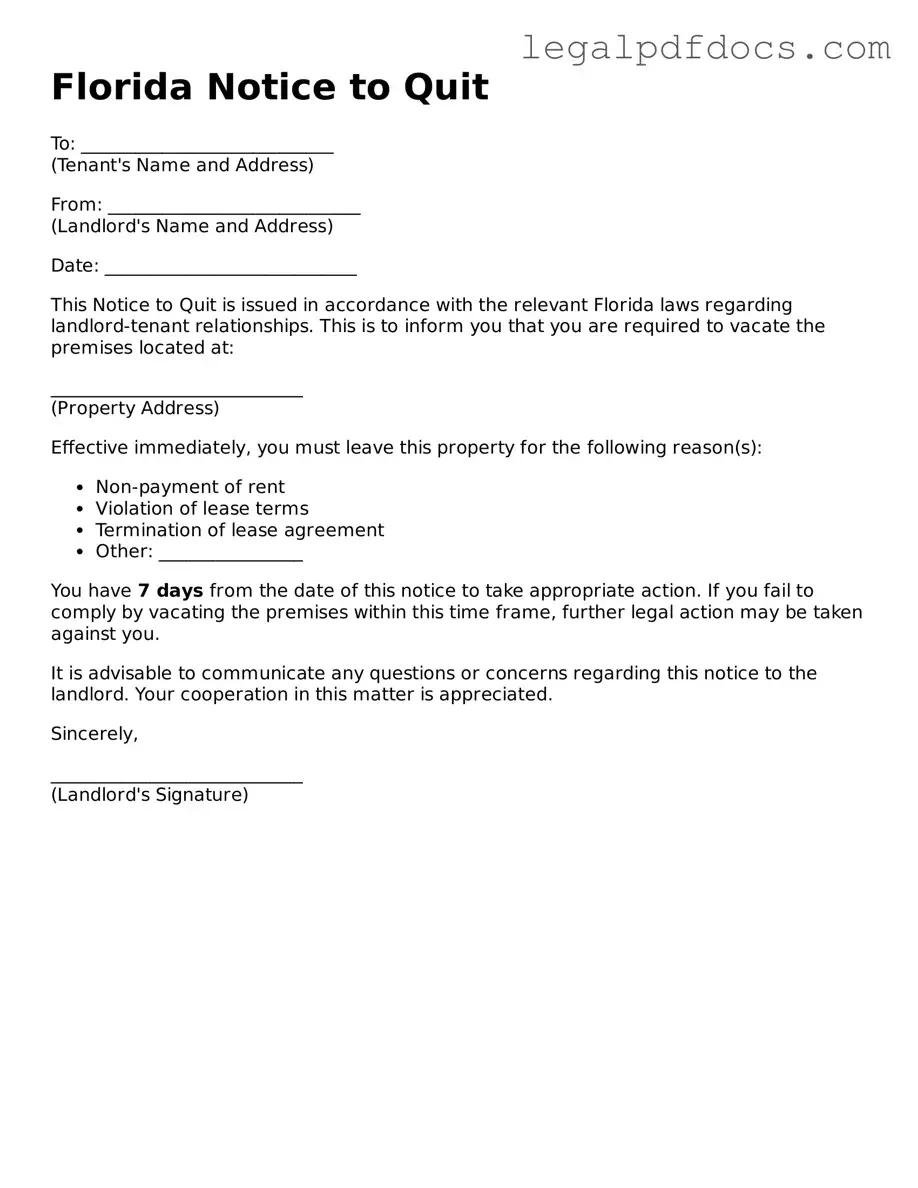Official Notice to Quit Form for Florida
The Florida Notice to Quit form is a legal document used by landlords to inform tenants that they must vacate the rental property. This notice typically outlines the reasons for eviction and provides a timeframe for the tenant to leave. Understanding this form is crucial for both landlords and tenants to ensure compliance with state laws.
To fill out the form, please click the button below.
Open Notice to Quit Editor Here
